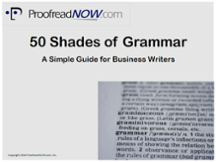 It’s highly unlikely your boss or coworker will ever ask you to identify the subject or verb in a sentence you wrote in an email. And colleagues will never ask you to verify that all pronouns in a sentence you wrote are agreeing with their proper antecedents. Well, at least not in most professions. This isn’t surprising, but makes it easy to see why we forget about what clauses are and why their structures are important in our daily writing.
It’s highly unlikely your boss or coworker will ever ask you to identify the subject or verb in a sentence you wrote in an email. And colleagues will never ask you to verify that all pronouns in a sentence you wrote are agreeing with their proper antecedents. Well, at least not in most professions. This isn’t surprising, but makes it easy to see why we forget about what clauses are and why their structures are important in our daily writing.
Why Is It Important to Know What a Clause Is and How One Is Structured?
If you know what makes up a clause, then you’ll know what makes clauses different from phrases. Phrases don’t always have a subject or a verb, and are often sentence fragments. Writing in sentence fragments makes your writing challenging to read and decreases your chances of effectively communicating to your intended audience. Knowing how to build an effective sentence, with properly formed clauses in the appropriate places, will allow you to be a clearer, more effective communicator.
What Is a Clause?
Clauses are the true building blocks of any sentence, and sometimes they form complete sentences on their own. Every sentence has at least one clause in it, but not every clause forms a complete sentence. Each clause contains a subject and a predicate (verb or verb phrase) of its own, and sometimes other modifiers.
There are two types of clauses. There are main clauses (also known as independent clauses) and subordinate clauses (also known as dependent clauses).
Main Clauses
Every sentence should contain at least one main clause. While you can create compound and complex sentences with more than one clause, each main clause should be able to make sense on its own.
A compound sentence is made up of two or more main clauses. Each main clause is linked by a conjunction, such as “and,” “but,” or “so,” and sometimes there will be a semicolon separating the two main clauses. The two clauses should share a related idea or there wouldn’t really be a need for them to share a sentence.
Examples:
Main Clause:
- Susanna (subject) painted (verb) a landscape.
Compound Sentence with a Conjunction:
- [He was born in Australia] (main clause) but (conjunction) [he lives in France now] (main clause).
Subordinate Clauses:
The main thing to remember about subordinate clauses is that they cannot stand alone if you want them to make sense. They rely on main clauses for their meaning. Together with a main clause, subordinate clauses create what’s known as a complex sentence. There are a few different types of subordinate clauses that are listed below.
A conditional clause usually begins with “if” or “unless” and describes something that is possible or probable. A conditional clause is often referred to as an “if-clause” and is also a type of adverbial clause because it often answers one of these four adverb questions: How? When? Where? or Why?
Examples:
- If the pot roast isn’t (conditional clause) done cooking, we’ll order takeout (main clause).
- Jackie scrubbed the dirty pan (main clause) [until her arms were tired] (conditional adverb clause).
Relative clauses have restrictive and nonrestrictive types.
A restrictive relative clause (also known as an “essential relative clause”) gives essential information about a noun that comes before it and can be introduced by “that,” “which,” “whose,” “who,” or “whom” (relative pronouns). Because the information in a restrictive clause is essential to the meaning of the sentence, the sentence will lose meaning without it. And you shouldn’t place a comma in front of a restrictive relative clause.
Example:
- She held out the gift (main clause) [that she brought to the party] (restrictive relative clause).
A nonrestrictive relative clause offers extra information that could be left out of a sentence without affecting its meaning or structure. They’re also normally introduced by “which,” “whose,” “who,” or “whom,” but never by “that.” You should place a comma in front of nonrestrictive clauses.
Example:
- Bob, who was in the kitchen (nonrestrictive relative clause), washed the dishes.
A noun clause contains a subject and a verb; however, it can’t stand alone as a sentence, which is why it’s a type of subordinate clause. And they usually begin with a relative pronoun like "that," "which," "who," "whoever," "whomever," "whose," "what," and "whatsoever," making them a type of relative clause. A noun clause functions like a noun in a sentence. You’ll recall that a noun identifies a person, place, or thing. Noun clauses can function as subjects, direct objects, indirect objects, an object of a preposition, and predicate nominatives.
Example:
- [What you say] (noun clause) matters.
Clauses and their structures are so fundamental to grammar that you may have already forgotten about what they are and why it’s important to know about them, especially since you probably learned about them a long time ago. However, to ensure that the sentences you write are clear, complete, and coherent, it’s a good idea to keep these fundamentals of grammar in mind while you work.




